Author(s)
Black Quantum Futurism (Camae Ayewa and Rasheedah Phillips), Rachael Rakes, Jeanne van Heeswijk
Reclamations of time, geared toward community and temporally “local” orientations, animate this interview with artists and activists Black Quantum Futurism (Rasheedah Phillips and Camae Ayewa), who draw from Afrofuturism, quantum physics, and “Afrodiasporic traditions of space and time that are not locked into a calendar’s date or a clock’s time." As discussed in the interview (which first appeared in Toward the Not Yet: Art as Public Practice, published by BAK and MIT Press, 2021), BQF’s recent and forthcoming projects directly challenge imperial and colonial standardizations of time.
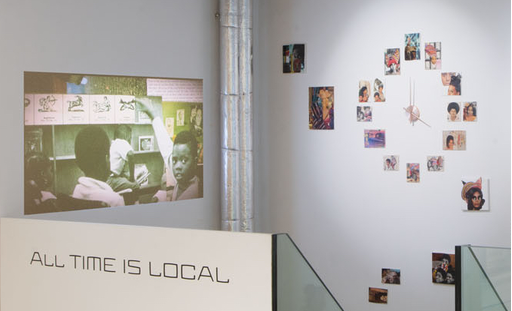
Rachael Rakes: I want to ask about the relationship between your work in art, theory, science, and creative production, and the advocacy and activism you do “on the ground.” It would be nice to hear about how your political imaginaries come out of work and life in a local context in Philadelphia. In your artistic work it seems clear that a lot of the theory and ethos comes from daily witness and practice, rather than the other way around.
Rasheedah Phillips: For me the theory and practice are simultaneous, and have emerged side-by-side. I have written science fiction and have been interested in science fiction since I was a young person, a young child, and so that has always informed my thinking, especially in terms of how I show up to different things. I was a housing attorney before, working at a non-profit, working with low-income folks, and working in a community before I even considered myself an Afrofuturist or an artist. When I started considering myself as an artist or an Afrofuturist, I was already deeply rooted into community and into my engagement with the community, so my approach came to be around questions of: “How does Afrofuturism inform my work as a housing attorney?” and “How does Afrofuturism inform my work in communities?” and not the other way around. In the theory of Afrofuturism itself, for me, the approach was around: How does the term Afro modify the future for Black people, and what does that actually mean for people who are routinely cut off from their futures? It was always very practical; I always thought of it in a very practical way: “What does it mean for the person I’m representing in an eviction court to be able to have a more expansive future, or more expansive options, or a greater expansion of time?” What I’m having to negotiate is time—as a temporal dimension of the future and thinking of the very literal ways in which these temporal domain is cut off from people though systemic racism. So in those different ways, both the practice and the theory have been very much grounded in those assumptions. This also applies to myself—I also come from a low-income back-ground; I was a teen parent; I was a person who was told that I was not going to make it to college, that I was going to have more kids, and that my future was kind of written for me, for a long time. I learned to shift those cycles and to create the timeline that I wanted for myself, and not the one that I was being told was supposed to happen for me. That is just how I’ve always approached these kinds of things.
Camae Ayewa: How I grew up, I was able to witness a lot of what we now call “hacking” of everyday situations. I grew up in a place where people really looked at the alternative ways that they could accomplish something. This is why I’ve always been thinking “outside of the box”—due to lack of resources, or just due to the miscellaneous everyday things that come up that take us off this supposedly linear path that we’re on toward achieving what everyone is trying to achieve socially. I feel like I’ve always been in neighborhoods that continue to be a reflection of this kind of hacking, of looking outside, or creating one’s own economic mutual, shared relationships.
RR: Maybe from here we can talk about your creative or professional roots around Philadelphia. Rasheedah, you mentioned being a lawyer and how that’s influenced your work in both a local and theoretical sense. And Camae, I know that you came out of organizing music festivals, working as a musician, and various other kinds of creative, larger-scale, communitarian projects. I was curious if you could talk a bit about how those things influenced where you’re at today, how you see working within community building, and the idea of what you’ve deemed “community futurisms.”
RP: Well, I’ve been organizing events and doing different things since college, and even in high school I was part of a young parents program where I organized workshops on student-life balance. So that’s always been something I was interested in doing—curating events and different things like that—but then I had to choose a path in terms of being a lawyer and being a parent, and so I didn’t really tap into my creative side for a while around that time. Then after I graduated law school, I started going to sci-fi conventions in and around Philadelphia that were very unwelcoming, and that were very white. I had just not yet tapped into the Afrofuturism world, but my experiences in those places inspired me to look for and be a part of other events that were dealing with science fiction and things like that. Then I came across an event that was happening in Georgia that was based around Afrofuturism at the Harriet Tubman Museum, and I was so inspired by that! I was like, “Oh, I want to bring that to Philly.” I had been going to Camae’s events too, and one of our friends used to throw a spoken word event and I was part of that and supporting that. So those events were just really inspiring me and made it seem like there could be something for Afrofuturism here in Philly. Platforms that would allow someone like me to come, read a story, not feel uncomfortable, and be surrounded by other people who are interested in these themes and topics—that inspired me to create the Afrofuturist Affair, which was a costume ball event that we held annually between 2011–2014 for creative people and artists. We had an art show that went along with it, where musicians, performers, and different folks came. The purpose of that event was also to raise money to be able to have a mutual aid fund, and although I didn’t have the language at the time, that really was what we were starting. I actually called it the Futurist Fund, back in 2011, and that was meant to be for people who I was encountering in my workspace, as a legal services attorney, who were losing their homes, and all they needed was like 500 dollars, or in some cases 100 dollars, to pay back-rent. But in my role as their attorney, working at Community Legal Services, I couldn’t give them that money, or it would have been inappropriate for me as their attorney to pay that money. The money that we generated from the event would be put into this fund for people to be able to access it to use it for different needs. And so that’s what we did for the first couple of years of the event: we created the Futurist Fund, and then held the event and made it accessible, made the tickets around 10 dollars, and that was one of my first events and dealings with that—it was directly tied into these communities.
CA: For me, creating these situations or events was really about stretching what we could do, you know? The first thing we wanted to do was to have a place to play, but because of the boundaries that so many people hold, we didn’t fit in anywhere—because we were using all different types of genres and because we were speaking about situations outside of ourselves. In Philadelphia, the music scenes were formed around hardcore punk, neo-soul, and hip-hop. There really wasn’t a space for the avant-garde—which is what I would call it now, but back then we just thought that we were wild or something. So once I was able to host some events, it was like, “Okay. What more can we do?” And the answer was that I wanted to throw a festival. We all wanted to play a festival, so I thought, “Why are we going to wait for someone to invite us to one?” With the ROCKERS! festival we did a BBQ Weekend, it wasn’t a case of, “Oh, we need this money”—it was about creating interesting situations that people could just find themselves at. So, this was early, but we did a Sun Ra screening, we did yoga, and none of us even knew what yoga was. We did a basketball game, we did an outdoor sci-fi reading, and those kind of things.
RP: It was so fun.
CA: Yeah, it was great! I can’t even believe how we pulled this off. I mean my only worry was to have enough money for hamburgers for everyone, and I had to cook them. So it was just beautiful to provide this kind of think tank, that is what I call it now, for artists to explore different possibilities within their work. All of the artists that performed are all incredible and now way more established than they were when we were all just figuring things out. When we first started getting contacted by European agents they would say, “How many people are in the group?” and we’d say, “Oh, well, actually it’s twelve of us,” or, “Actually, it’s just eight, but we all have our different groups.” Each artist creates their own different group, because they’re inspiring the people that are close to them in their communities. When you really look at it, it’s like a bunch of different constellations, and every-one is bringing new stuff in. Some people are like, “Hey, I’m working with youth now, so we’re bringing this in.”
Jeanne van Heeswijk: Knowing about the trajectory of your work, there’s always been these time-space formations being created that allowed certain people to meet and collaborate, and that created a kind of space through which other futures could be rehearsed and practiced or even formed. Whether it was ROCKERS! (2007), Metropolarity (2012), Afrofuturist Affair (2011–2014), the Community Futures Lab (2016), or Black Women Temporal Portal (2018), there are many projects that are configurations allowing for different cross-connections to emerge. Could you maybe elaborate more on that?
RP: They’re very intentional constructions of space and time. Curation is an overused word, but we’re very much crafting or building an experience when we’re doing these different things. These are experiences, spaces, and space-times that I, as a Black person, have felt locked out of. I’ve felt locked out of a space-time where I can talk about sci-fi and time travel and all these other things, or where I can talk about my safety as a Black person through this particular kind of lens. I’ve never had those space-times, so I’ve had to create them and co-create them with people. It’s very intentional and it also feeds into how we think about time itself, and how we’re influenced by time. A lot of our thinking is based around Afrodiasporic traditions of space and time that are not locked into a calendar’s date or a clock’s time. It’s very much informed by us coming together and creating that space and time, and that being a privileged space in and of itself is made meaningful by us coming together and creating it. We’re very much guided by those principles in terms of how we create projects, and our projects are life projects. We’re influenced by ourselves just as much as anything else in our community. We come from the community that we’re in, we’re not artists flying in with a kind of detachment or separation; we are of this community—we are of the space-times that we create. I am of the Black Women Temporal Portal as a queer, mother, person who’s been locked out of certain things, and I have had to create space-times where I feel safe, where my child feels safe, where my neighbor feels safe, and where our friends feel safe. So, yeah, it’s very intentional.
CA: I guess I would say that we learn, too, from each space. I’m thinking back to our first residency called Neighborhood Time Exchange (2015), where we had our studio that we would go and visit every day. The big impact was just trying to learn how to better integrate our practice with what’s going on in the community, forming deeper relationships. With being an artist in residence, it’s so time-based, and it’s funny that this one was called Neighborhood Time Exchange, because in this situation it was almost like we were hired graphic designers. We knew that we were so much more than that, especially coming from all the events and projects that we have just mentioned—we can whip up an event in five minutes, and I mean we are on the pulse! But it was this time constraint that led us to feel, “Oh, well, we’re in charge of making a pamphlet,” but we wanted to be more integrated, to be more than just some hired graphic designers. As we started to create more spaces and go to more residencies after that, we really made a point of being in control of our own agency over how we created the relationships, rather than having to create relationships in accordance with what the residency wanted.
JvH: One of the things that you proposed through A Blade of Grass Fellowship was, of course, the creation of the Community Futures Lab in 2016. Its aim was to address that question of the time-space of the community residency, but within your own neighborhood in Sharswood, Philadelphia—using the residency as a way to enlarge that time-space to talk about “durational belonging,” as I would call it.
RP: Definitely, and it’s interesting that I’ve never really thought about it that way, but it is like a permanent residency. With the Community Futures Lab we were really able to expand, and we learned so much from it. We still have relationships with some of the folks from Neighborhood Time Exchange that we worked with over there in West Philly, but it was super limited; it was prescribed, in a way, around this exchange with the community, but even the idea of exchange was uneven, and we didn’t have time to really explore those kinds of relationships in that way. So the Community Futures Lab in Sharswood did give us space to expand and time to expand, and it wasn’t time-limited. We also live in the community, and it was a space where we often passed by—literally every day to work I would pass by this space. But I was also involved as an attorney, working with folks in the community, so there were all of those different pathways of connection. It’s just beautiful to still be working with that community very closely. I’m the zoning chair now on the Brewerytown Sharswood Community Civic Association Zoning Subcommittee. I’m working with these folks almost every day—every week we’re talking.
CA: It definitely gave us experience, or more experience, with this self-guided residency—not saying that we ever called it that—that kind of merged with us being a part of the community as a resource. That merge happened pretty seamlessly, of being in-residence to the neighborhood, but also having the agency to be self-guided through that, and experiment and question together different angles of running the Community Futures Lab: a lot of innovative ideas in the form of workshops, and in how we start and end an event.
JvH: I visited two or three events in the Community Futures Lab, and it was important to see that it worked as a gathering space but also as a library, a space of production, and a space of questioning. It worked as a drop-in space for whoever felt like they needed a place to drop into. How it was programmed was not prescriptive but grew from that what was needed; it sort of unfolded when you were there. So I like the fact that you call this a “self-guided residence”—you saw it grow and shift over time. I just saw recently you were having this great program again about community history and community voices, so it’s not something that went away when you no longer were having the space. Again, it was not only depending on a space: it was just depending on a space-time fluidity in the neighborhood that you, from the physical space, create into a sort of a continuum that’s there now.
RP: I knew that I could not run a space forever, and we went into this being really intentional about not wanting us to be drop-in artists into the community. Whether the project continued to be funded or not, what were elements of it that would continue, and that could grow and be dynamic and be responsive to what the community needs and wants from us—from the perspective of what we can provide in terms of our skills as both a housing attorney and advocate, and artist and musician? So it has integrated and shifted, and it also allows us to have elements of it that go out into the world: there’s been a Community Futures Lab at Chicago Architecture Biennial; we’ve had the Oral Futures Booth (2018), which originated in the Community Futures Lab, that has been in multiple exhibitions including in Marseille and London; and now we’re creating an Oral Futures Booth for Village of Arts and Humanities, which is in North Philadelphia. So it’s now coming back to North Philly, but it’s also still in North Philly, because we’re still connected to the community in Sharswood. And there’s now this online piece of it, the FuturesLab.Community site, so it just continues in iterations.
RR: Camae, you were talking about witnessing a specific kind of constellation at the time you were doing ROCKERS! You mentioned this multi-point thing where you’re doing cultural events, but they’re also community-building, and realizing that there are all these intersecting groups. I’m curious what that constellation looks like to you these days, in Philly?
CA: These days, well, I’m in isolation because of the pandemic. I’ve been creating a lot of music, because that’s my job and my studio is right here, so that’s all I do—trying to pull people into my music and things like that. I’m trying to do more of this pulling people in, especially with Metropolarity. But we always work in different kinds of ways with each other: I’ll have a friend write my liner notes for my album, or maybe read a sci-fi story over one of my tracks, but it’s been very limited lately. I want to do things, but it’s so hard here in the winter. I mean, it is just so hard for me to really get out there, but before the pandemic we were always out. We would’ve hosted events in December, right? We had little things, but something about it now is just so hard as everything closed down. I wanted to start some things, and I started the frameworks for them, but I haven’t brought it all together. I want to start this kind of mutual mentoring between avant-garde artists—like a peer-mentorship but not so taxing. Because I’ve been mentoring with some graduate sound students; you know, it can be a little taxing, with everyone going through all these emotions. With the mutual mento-ring I want to have just more of an outlet to just speak with people from different levels within the avant-garde world, and particularly Black women artists that are really isolated. I have a good colleague who is in Finland, and is very isolated, but does a lot of work with promoting women electronic artists, so I’m looking for some way to bring us together virtually. I’m not a virtual person; I’ve never even liked videos of myself, so it’s definitely been a weird adjustment on that end. But people are really getting innovative, which is really nice. There’s a rapper who invited me to perform inside of a game of Minecraft, where I would have an avatar. We’re thinking about some ways that it can still be meaningful; we’ve done some great work as far as programming with Black Quantum Futurism. We had Time Camp 001 (2017), which was over two weekends, it was incredible, and we just did a series of workshops in February 2021—I did a poetry workshop. We’re getting this virtual way of doing things, and this platform, together, figuring out how to connect people that are in isolation. We realized that not all quarantines look the same, and we really want to bring together the artists in the places that are hit hardest.
RR: Rasheedah, most of your legal work is around housing. I imagine that must be really intense right now.
RP: Oh yeah. It’s extremely, extremely intense right now. I’m working 12-hour days, every day, and I don’t even go to court. I focus on policy work around housing, and so, as you might imagine, I don’t know what’s happening over where you guys live, but in the US there are various eviction procedures happening. Rental assistance is available, but there are things that need to happen so that people don’t get harmed in the future. I’m working very hard right now around a lot of this stuff, and then I co-manage a staff of 28 people, many of whom go to court on a daily basis, representing people in court who are facing eviction.
JvH: I think your daily work is a reflection of what is actually currently happening in the world. I think this is interesting, given that your work is predominantly about futures. Working with the present is like seeding futures. Could you say something about how you’re working with the present?
RP: I think we have just become fluid in code-switching around time, as it were. I think the pandemic has made everybody a little more fuzzy with time things, but as part of our practice, and just as who we are, we know how to work both within the linear, capitalist time-scheme that we have to be a part of right now, but we also know how to trouble that time-scheme. We do this using the tools of Afrofuturism, the tools that we have developed as Black Quantum Futurism, and the tools of our ancestors and how they think about time. It makes it easy to see that linear time and western capitalist time is not the only way of being in time when you immerse yourself in that other way, and take it very seriously. When you take that very seriously, it’s natural to understand how the past, the future, and the present are connected; it’s more about constructing language for other people to understand it, than it is about how we live it and deal with it. I think that’s what our practice is about and what it focuses on.
CA: I think that we’ve always been like this, since we started. Ever since our mutual friend said we should check out each others’ blogs, we were always this way. Because you’ve got to understand: we’ve been doing this work, and then just waiting for different types of opportunity. My first album was released in 2016, but those songs had been years old. You get what I’m saying? They were still speaking of what was happening right there in 2016, and that goes with what you were saying earlier about the type of upbringing that we come from—we learned that there is this quantum theme on top of every-thing. It’s these circumstances that we find ourselves in. Not everything is an open and shut case. There’s all these influences and situations that we fall victim to. So this is how we look at the world. We can’t just see something as if it’s stuck in time, or frozen in time; we have to look at it from, “Oh, what was it like when our parents were young? What was going on?” There are so many connections with everything, and I think that’s the best thing about Black Quantum Futurism—we’re not just looking at the whole of every-thing, we’re looking at all the different pieces that come to make that whole. The Quantum Event Map workshop that we do really speaks to this, because there’s so many different influences. Rasheedah just did a great online workshop talking about systemic racism, really breaking down all the factors that are at play.
RP: For that workshop, we were looking at the different levels of racism and how they influence each other, whether at the personal level, at the interpersonal level, and at the institutional and structural level. Another example of this is an exercise you came up with, Camae, the Housing Journey Map. It’s an exercise we had people do in our workshops, to look at their journey through time and space at all the different places they’ve lived, and how those places influence them now, and how they influence their privilege or their access.
CA: And looking at why they had to move. Whether it’s, “Oh, we got forced out of this place,” or “This was no longer safe,” you know? Compared to some people who have the privilege of saying, “We saw this great listing for a bigger house, we just went for it.”
JvH: I want to ask about your residency at CERN, Geneva, and some of the other big projects you have coming up. How will you utilize those residencies to foster your work?
RP: So there’s two residencies that we’re working on. One is a fellowship that I’m working on more, but Camae is going to help of course, called Time Zone Protocols (2020–2022) at The Vera List Center for Art and Politics, New York. That one is focused on the protocols of time and time zones, and in particular the International Prime Meridian Conference in 1884, where 25 countries came together to decide upon the world’s prime meridian location at Greenwich, England. I’m looking at the social-historical context of that, at what was happening for Black people and the Black American community around that time, and at how the setting of those time zones impacted us and our communities, and continues to do so. The Time Zone Protocols project studies the protocols of this conference, like how their outcome came about with no input of people of color, as there was no one of color and no women at that conference. We actually want to reconfigure that conference and hold our own sort of International Meridian Conference.
CA: We’re working with multiple different kind of times at once. Sometimes it gets a little complex, I guess, because you still have to deal with how the world views time. That’s been the thing we’ve said since we started Black Quantum Futurism, especially with Rasheedah, being like, “I have a kid, you know? I have to think about these time constraints, and I have to think about the way that I’m viewed if I’m late, if I’m this, or if I’m that.” We’ve spoken throughout Black Quantum Futurism’s existence about how time can be oppressive. With each workshop and each residency, we’re learning how to better trouble that—the reality of working within all of these different time scenarios or realities, these temporal zones.
RP: The CERN project is looking at this thing called CPT: change, parity, and time-reversal, which is a physics principle. CPT also refers to “Colored People’s Time,” and so we’re going to be studying these different scales of time within physics, and learning how quantum physicists view time, and have that inform and connect with the Time Zone Protocol project, where we want to literally re-write these protocols of time. It’ll inform every aspect of the work that we do as Black Quantum Futurism.
JvH: When you speak of these protocols, CPT and Colored People’s Time, but also about the quantum theories, is that, again, it’s about stretching how we want to be in time, and asking what are the ways that we relate to each other and to our direct environments in time—how communities and people can be in time together. I think through your work, but also through the journey of your work, there is a lot of practicing this, and constantly taking and re-taking some of these thoughts about time. Do you think that for you there is now the possibility to be in all these different residencies in your own understanding of time?
RP: I take very seriously the work that we do as Black Quantum Futurism and the notion that time can actually be manipulated, and I use that in my everyday life in practical ways. Although I’m a full-time housing attorney, I have crafted and manifested a space that I work in where I’m going to be able to carve out that time—where my job supports that, and where it understands that me taking time away from the job ultimately benefits my work there. A space where my work is valued in such a way that they’re willing to allow me to take the time away to go pursue this residency, and they see that as important and valuable as it informs my work; they see that I’m able to bring that creativity to my work as a housing attorney. I have found ways to meld them and to make it work. I really literally cross pollinate: when I’m writing an op-ed about housing from the perspective of a housing attorney, I’m throwing in language about futures. I’m absolutely marrying these two approaches in that one space, and so now I feel like I’m a part of carving out a space where it’s okay to talk about Afrofuturism in lawyering. I was just invited a couple of weeks ago to be at a conference of Black law students, and the conference was about Afrofuturism—it’s just amazing to see that. I was a part of that, and now we have an Afrofuturist, race and technology scholar Dr. Alondra Nelson, in the president’s cabinet as deputy director for science and society. We’re in a world where these things are possible. It’s not as hard as it was for me 10 years ago, because I’ve been a part of carving a space and time where these things are reality; they’re manifesting into our reality, and it doesn’t look like how we think it’s going to look. We’ve been tricked into believing that change is this big bang thing, and that the only way we’re going to know that we’ve made it into an Afrofuturist world is if it’s shiny and it looks like Wakanda. It’s like, no! It’s in the everyday! That’s what our work is about: it’s the everyday, it’s the practical ways. People in North Philly are Afrofuturists and have thought about Afrofuturism since back in 1968 when Reverend Leon Sullivan built a space agency in the middle of North Philly. So it’s the everyday, it’s those things that don’t get lauded, or that Disney doesn’t put a billion dollars into. It’s those things; that’s what we value as part of our world and how we think about and view space and time. I like what you said, expanding how communities and people are in time together. I think we figured out the space thing well enough, right? And, you know, if we think a lot about history and how space and spatialization came to dominate our conversations and our thinking, it goes back to Descartes, and all those folks, and the idea of visualization: that being able to see something was a pre-dominant way of being in reality, and of how we think about reality and how we construct our reality. But time is not visual; time is very intangible. So it’s harder to grasp onto that, and we want to grasp onto that—we want to grasp onto those intangible things, make them tangible, and make them tools that we live and shape our realities with. Time is one of those, I guess.
Related
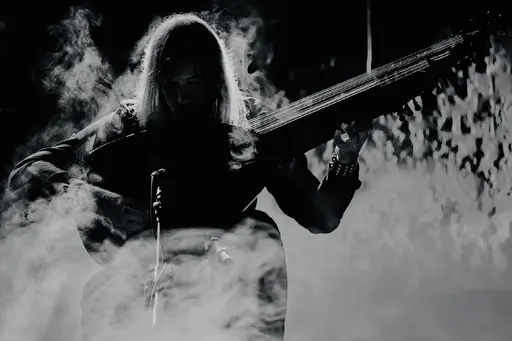
In dit korte afro-futuristische verhaal, geschreven door Amiri Baraka in 1995, ontdekt een ongenaamde uitvinder een manier om terug te reizen door de tijd – door muziek. “I duwde de Anyscape in de Rhythm Spectroscopic Transformation. En toen stemde ik het af zodat Anywhereness kan worden gecombineerd met de Reappearance als muziek!” legt de uitvinder uit. “Nu voeg ik Rhythm Travel toe! Je kunt verdwijnen en verschijnen waar en wanneer die muziek speelde.”

Tijdsgebonden drag, erohistoriografia, chronomornativiteit, geilheid onder het kapitalisme, ritme, dansen en 'crip time'. Dit zijn een paar van de onderwerpen die worden genoemd in het interview met Elizabeth Freeman, queer theoreticus en auteur van de boeken Time Binds: Queer Temporalities, Queer Histories (2010) en Beside You In Time: Sense Methods & Queer Sociabilities in the American 19th Century (2017), en Amelia Groom, co-editor van de 'No Linear Fucking Time' focus op Prospections.

Reclamations of time, geared toward community and temporally “local” orientations, animate this interview with artists and activists Black Quantum Futurism (Rasheedah Phillips and Camae Ayewa), who draw from Afrofuturism, quantum physics, and “Afrodiasporic traditions of space and time that are not locked into a calendar’s date or a clock’s time." As discussed in the interview (which first appeared in Toward the Not Yet: Art as Public Practice, published by BAK and MIT Press, 2021), BQF’s recent and forthcoming projects directly challenge imperial and colonial standardizations of time.
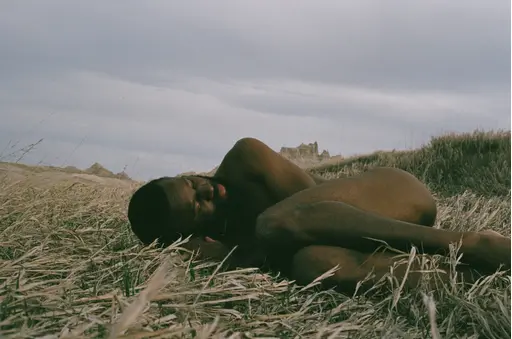
Dit essay, oorspronkelijk gepubliceerd in het Journal of Interdisciplinary Voice Studies, is een onderdeel van muzikant en schrijver JJJJJerme Ellis’s veelzijdige project The Clearing. Ellis beschrijft het bos en zijn open plekken als “plekken van weerstandige ‘black oralities’” en verkent hoe stotteren, Blackness en muziek kunnen figureren binnen de praktijken van het weigeren van hegemonisch tijdsbeheer, spraak en ontmoeting.
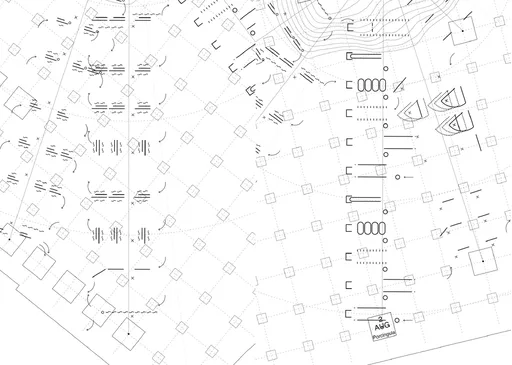
Wanneer inheemse gemeenschappen worden gevraagd om bewijs te tonen van hun traditionele connectie met hun voorouderlijke landen, respecteert wat Westerse legale instanties accepteren als documentatie niet volledig hoe stammencultuur en traditionele manieren van kennisoverdracht werken. Het onderzoeksproject en boek The Language of Secret Proof (2019), geschreven door Nina Valeria Kolowratnik, reageert op de ervaring met de productie van bewijsmateriaal van bewoners in Jemez Pueblo, New Mexico. Dit boek bevecht de omstandigheden waaronder de rechten van inheemse volken om traditioneel land te beschermen en terug te winnen worden behandeld in het wettelijk kader van de Verenigde Staten.

SEA – SHIPPING – SUN (2021) is een korte film en meditatie over maritieme handelsroutes, geregisseerd door Tiffany Sia en Yuri Pattison. De film werd opgenomen over de span van twee jaar, maar is geedit om het eruit te laten zien alsof het één dag is, van zonsopgang tot zonsondergang. De film speelt de soundtrack van scheepsberichten uit het archief van BBC Radio 4 uitzendingen. SEA – SHIPPING – SUN werd gemaakt met de intentie om de kijker slaperig of relaxed te laten voelen, en verzamelt een visie van verstrengeling. Wij worden achtergelaten met de overblijfselen van geschiedenis: een zachte, wiegende waltz over de zee.
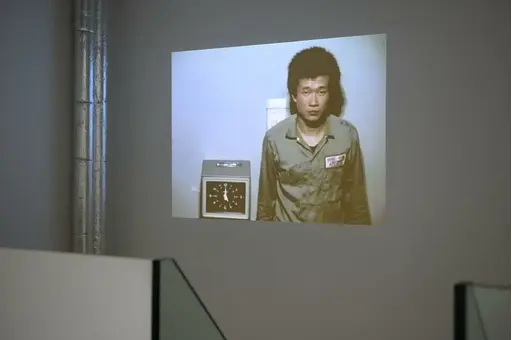
In dit essay reageert Amelia Groom op Tehching Hsieh's werk Time Clock Piece (One Year Performance 1980–1981) (1980-1981), een van de stukken die te zien is als onderdeel van de tentoonstelling No Linear Fucking Time bij BAK, basis voor actuele kunst, Utrecht. Door een lezing van het gelijktijdige anti-werk lied 9 to 5 (1980) van Dolly Parton reflecteert Groom op de historische verschuivingen in de manieren waarop werknemers werden en nog steeds worden uitgebuit door technieken van tijdsdiscipline.
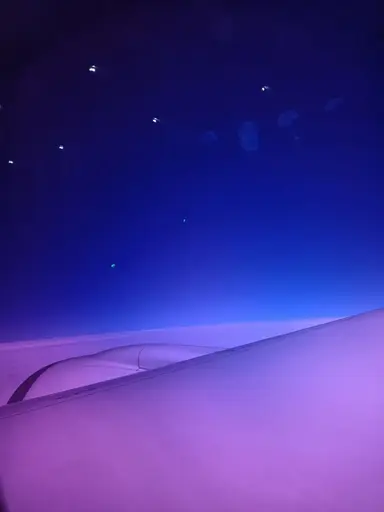
Grappling with the imposed linearity of timespace as a fundamental feature of colonial violence, this essay by Promona Sengupta (also known as Captian Pro of the interspecies intergalactic FLINTAQ+ crew of the Spaceship Beben) proposes a mode of time travel that is “untethered from colonial imaginations of the traversability of time and space.” While coloniality has enforced an externalization of time and space as things outside the body, Sengupta affirms practices of relational care and survival that restore time and space as embodied realities.

Weird Times (2021) is een chapbook van 30 pagina's door kunstenaars Tiffany Sia en Yuri Pattison over de tijd aflezen en hegemonie. Het bevat Sia's schrijfwerk en beelden geselecteerd door Pattison, en geeft een korte geschiedenis weer van de ontiwkkeling van technologieën voor tijdregistratie. De klok wordt gedemonteerd als een politiek werktuig, een metronoom van dwang en een versneller van oorlogsmacht. Uit deze mechanieken verschijnen weerstandige ‘counter-tempos'.
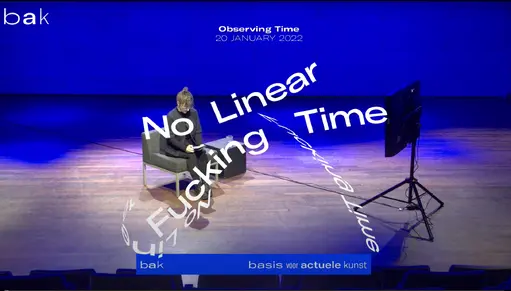
Een online gesprek met performance kunstenaar Tehching Hsieh, schrijver Amelia Groom en schrijver en curator Adrian Heathfield, geleid door Rachael Rakes, BAK curator Public Practice, op 20 januari 2022. Het gesprek neemt Hsieh's werk als uitgangspunt voor het bespreken van onder andere perfomatieve tijd, werktijd, gaten en ritmes van uithoudingsvermogen.
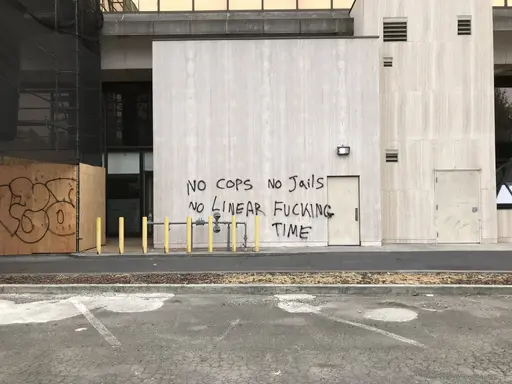
The No Linear Fucking Time Bibliografie is een zich ontwikkelend naslagwerk waarin wetenschappelijke en artistieke teksten worden gebundeld die betrekking hebben op de verscheidene onderzoekslijnen binnen dit project.

In ‘Reclaiming Time: On Blackness and Landscape’ (voor het eerst gepubliceerd in PN Review issue 257 in 2021), bekijkt dichter en schrijver Jason Allen-Paisant de geracialiseerde maatschappelijke contexten en moderne milieuconstructen die ‘Zwarte levens disproportioneel beroven van de voordelen van tijd.’ Hij put uit zijn poëziebundel Thinking with Trees om een koloniale epistemologie van de natuur te schetsen, en de rol van poëzie te benadrukken in het genereren van vormen van Zwart verwantschap en politiek bewustzijn, gebaseerd op een hernieuwd gevoel van ‘diepe tijd’. De vraag of het mogelijk is om middels poëzie ‘tijd terug te claimen’ staat centraal in de tekst.
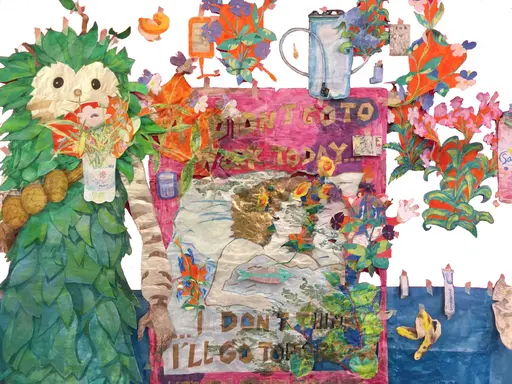
Als hij door de ‘Nothing To Declare’ uitgang van het vliegveld London Stansted loopt, ziet Sam Keogh drie grensbewakers: een varken, een eenhoorn en een bezorgde cartoonklok. Pig Eater is het script voor een monoloog dat voor het eerst opgevoerd werd als onderdeel van Keogh’s tentoonstelling Sated Soldier, Sated Peasant, Sated Scribe, in Goldsmiths Centre for Contemporary Art, Londen in 2021. Het verweeft fantasieën over overvloed en de afschaffing van werk; over feesten en rusten; over sabotage, anachronisme en het ‘opfokken’ van lineaire tijd.
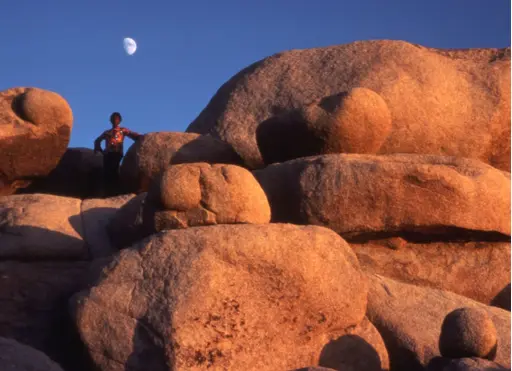
In dit gesprek met Walidah Imarisha (voor het eerst gepubliceerd in Toward the Not Yet: Art as Public Practice, BAK en MIT Press, 2021), schetst de schrijver en activist haar concept van ‘visionaire fictie’ als een verbeeldingspraktijk om toekomsten te verlossen van het bolwerk van lineaire tijd. Imarisha put uit haar werk als strafrechtelijk abolitionist, en spreekt specifiek tot de bewegingen en ideeën die voortkomen uit de Zwarte strijd in de Verenigde Staten. Ze benadrukt dat we ons bij het veranderen van de toekomst moeten verhouden tot het verleden: ‘specifiek vanuit een kader gericht op gedekoloniseerde, niet-lineaire dromen van vrijheid die gegrond zijn in de strijd van gemeenschappen van kleur voor autonomie en bevrijding van kolonialisme.’
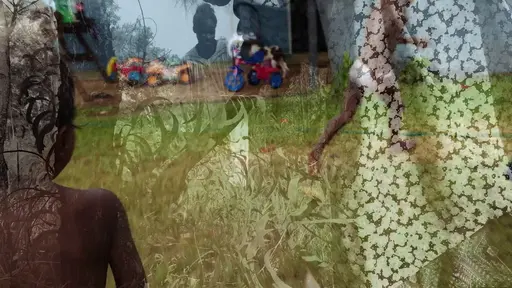
In haar essay ‘In Some Places the Not-Yet Has Long Been Already’ (voor het eerst gepubliceerd in Toward the Not Yet: Art as Public Practice, uitgegeven door BAK, basis voor actuele kunst en MIT Press, 2021) put Elizabeth A. Povinelli uit haar werk als onderdeel van het Karrabing Film Collective. In de tekst contrasteert ze de temporele oriëntatie van het laat-koloniale liberalisme – getroebleerd door de op handen zijnde catastrofes van een totale klimaatinstorting – met de voorouderlijke catastrofes van kolonialiteit en slavernij, die zowel van het verleden als het heden zijn. Deze voorouderlijke catastrofes, aldus Povinelli, ‘blijven groeien uit de grond die kolonialisme en racisme hebben bewerkt, in plaats van op te duiken aan de horizon van liberale vooruitgang.’
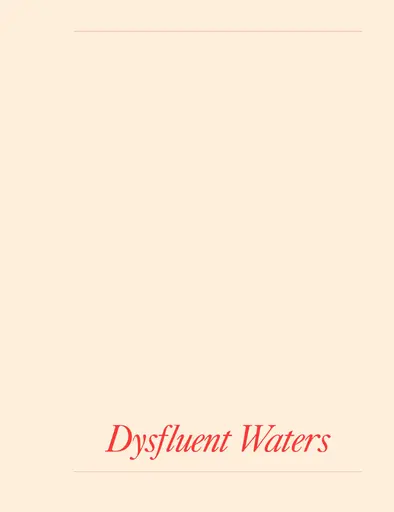
‘Dysfluent Waters’ is onderdeel van het multidimensionale project The Clearing van muzikant en schrijver JJJJJerome Ellis, respectievelijk een boek uitgegeven door Wendy’s Subway en een gelijknamig album uitgebracht door NNA Tapes in 2021. Hij ziet het bos en haar open plekken als ‘plaatsen waar al eeuwenlang verzet plaatsvindt middels zwarte gesproken cultuur.’ Ellis onderzoekt hoe stotteren, zwartheid, en muziek een rol kunnen spelen bij verzetspraktijken tegen dominante voorschriften voor de beleving van tijd, spraak en ontmoeting.
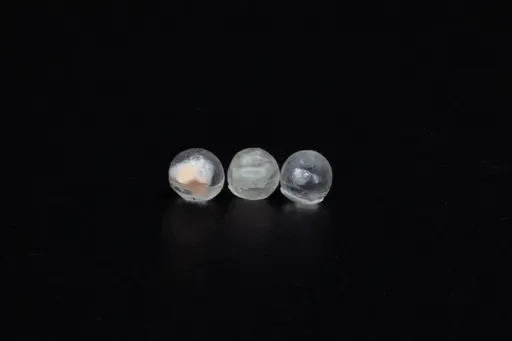
In haar tekst ‘Dearest Zen (Letters to Lichen)’ presenteert kunstenaar en wetenschapper Adriana Knouf toekomstige liefdesbrieven aan korstmossen: de samengestelde symbioten van schimmels en algen of cyanobacterieën. Bezien door de lenzen van de ‘xenologie’ (Knouf’s term voor de studie, analyse en ontwikkeling van het vreemde, buitenaardse en andere) en trans*-tijdelijkheden, onderzoekt ze manieren om te leren van, en opgetogen mee te doen met, intimiteiten en uitwisselingen tussen verschillende organismen.
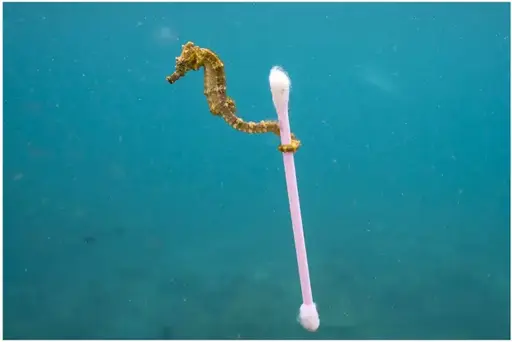
In ‘Immortals: on the Ancient Future Lives of Stone and Plastic’ verweeft Marianne Shaneen verhalen, geschiedenissen en ontologieën van twee materialen: steen en plastic. Als quasi-onsterfelijke substanties zijn steen en plastic getuige van de catastrofale effecten van uitbuitende lineariteit, terwijl hun levensloop veel langer is dan dat van een mensenleven. Dit essay verweeft deze twee materialen, die schommelen tussen het geologische en synthetische, en die diep ingebed zijn in industrieel-kapitalistische ontwikkeling.

‘The Clearing: Melismatic Palimpsest’ is onderdeel van het multidimensionale project The Clearing van muzikant en schrijver JJJJJerome Ellis, respectievelijk een boek uitgegeven door Wendy’s Subway en een gelijknamig album uitgebracht door NNA Tapes in 2021. Hij ziet het bos en haar open plekken als ‘plaatsen waar al eeuwenlang verzet plaatsvindt middels zwarte gesproken cultuur.’ Ellis onderzoekt hoe stotteren, zwartheid, en muziek een rol kunnen spelen bij verzetspraktijken tegen dominante voorschriften voor de beleving van tijd, spraak en ontmoeting.